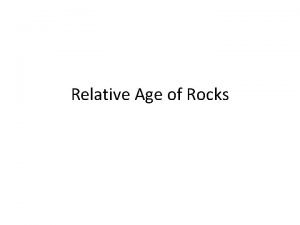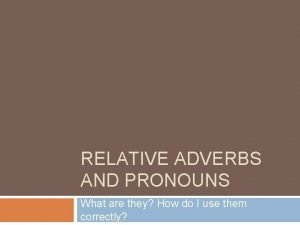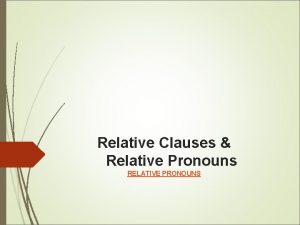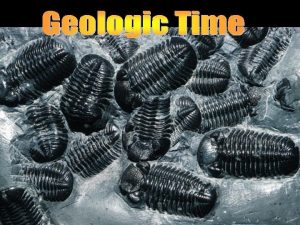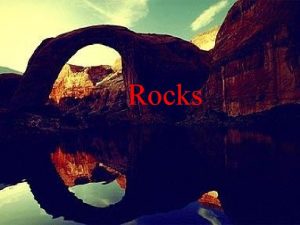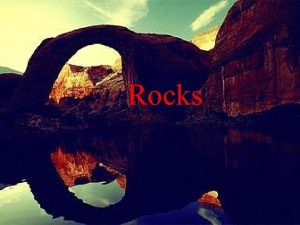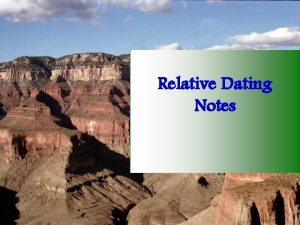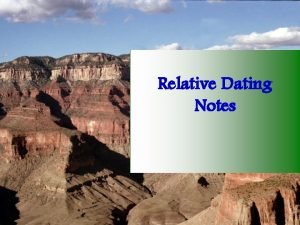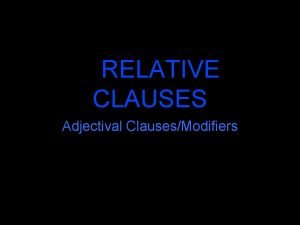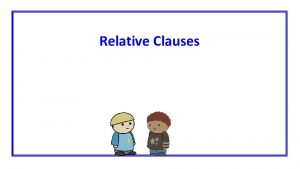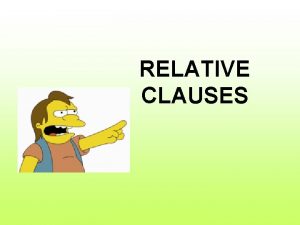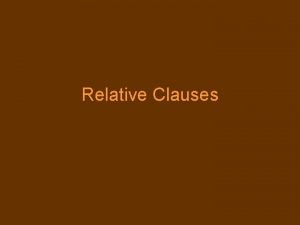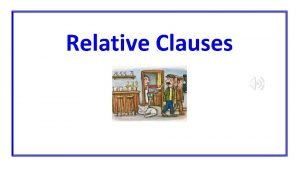Notes on Relative Ages of Rocks EarthSpace S




















- Slides: 20

Notes on “Relative Ages of Rocks” Earth/Space

S. W. B. A. T. • • • Describe methods used to assign relative ages to rock layers Interpret gaps in the rock record Give an example of how rock layers can be correlated with other rock layers

Relative Ages (pages 576 -579) • • • Law of Superposition – oldest rocks are on the bottom (p. 576) Younger rocks are deposited horizontally & layered progressively upwards Rock layers have to be undisturbed (not folded)

Disturbed or Undisturbed Rock Formation?

Relative Ages • • Relative age – compares ages to something else (p. 575) Example: an event occurring before or after another event

Relative Ages (p. 576) • • If you find a fossil in a rock layer that is on top of another fossil then the top fossil is younger The fossil on the bottom-most layer will be the oldest – in an undisturbed formation

Unconformities (p. 578) • • • Unconformities - missing gaps in the rock layer Erosion can scrape or wash rocks away over time Unconformities can also form by no new deposition of sediments

Q: Can you find the area of the Unconformity? A:

Unconformities • • • Angular Unconformities – horizontal rock layers that are tilted & eroded (p. 578, Figure 1) A “jagged” line usually indicates an erosion line Tilting of layers are caused by plate tectonics (movement of Earth’s crust)

Angular Unconformity – New Mexico

Unconformities • • Disconformity – missing erosional gaps in non-tilted rock layers (p. 578, Figure 1) A “smooth” line usually separates the layers

Disconformity

Unconformities • • Nonconformity – igneous rocks are uplifted & eroded (p. 578, Figure 1) Sedimentary rocks are then deposited on the eroded igneous rock surface

Nonconformity – Chapman’s Peak, South Africa Video (3: 58) “Explaining Unconformities”

Nonconformity – Grand Canyon Video (3: 42) “Origin of the Rocks of the Grand Canyon: A Sandbox Demonstration”

Matching Up Rock Layers • • Correlation – identifying a rock sequence & matching it to another sequence far away (p. 578) Geologists can correlate rock layers over great distances

Matching Up Rock Layers • • Fossil evidence is also used to match up rock layers Correlation is important in finding oil, natural gas, coal & other resources in rock layers

Matching Up Rock Layers • • Sometimes determining relative ages of rock is not enough and other methods are used Example: numerical dates are needed to determine the age of the Earth

Video Summary (4: 49) “Relative Dating”

Class Activity • • • In the video, relative age dating was compared to taking photographs Create your own analogy for relative age dating and write a short paragraph explaining your analogy Review this lesson at Kahoot. it! And/or use the online Quizizz “Relative Ages of Rock” quiz
 Sedimentary igneous and metamorphic
Sedimentary igneous and metamorphic Igneous rock to metamorphic rock
Igneous rock to metamorphic rock Dark ages vs middle ages
Dark ages vs middle ages Why are the middle ages called the dark ages
Why are the middle ages called the dark ages How is intrusive igneous rock formed
How is intrusive igneous rock formed Andesite vs granite
Andesite vs granite Relative age of rocks diagram
Relative age of rocks diagram Relative age of rocks diagram
Relative age of rocks diagram Types of relative clauses
Types of relative clauses Relative pronouns and relative adverbs
Relative pronouns and relative adverbs Relative clauses and relative pronouns stage 15
Relative clauses and relative pronouns stage 15 How to find conditional relative frequency
How to find conditional relative frequency Relative motion in a sentence
Relative motion in a sentence Cube wisc
Cube wisc Middle ages buildings
Middle ages buildings Ages 30 to 49 in the life course are known as the
Ages 30 to 49 in the life course are known as the A pattern repeated through the ages in literature
A pattern repeated through the ages in literature Church modes
Church modes Renaissance art vs medieval art
Renaissance art vs medieval art Fdark ages
Fdark ages Define the seven ages of cinema.
Define the seven ages of cinema.






